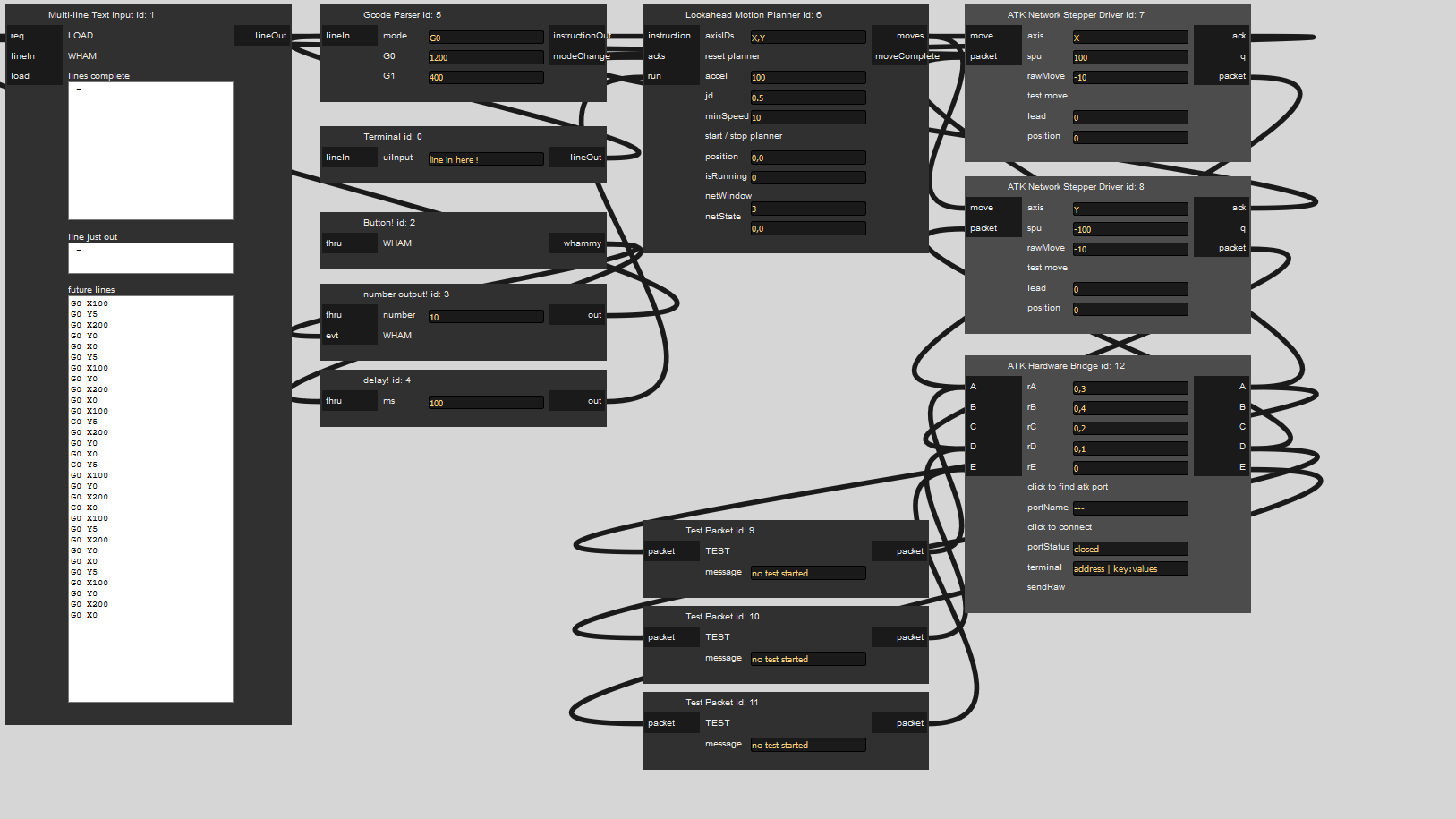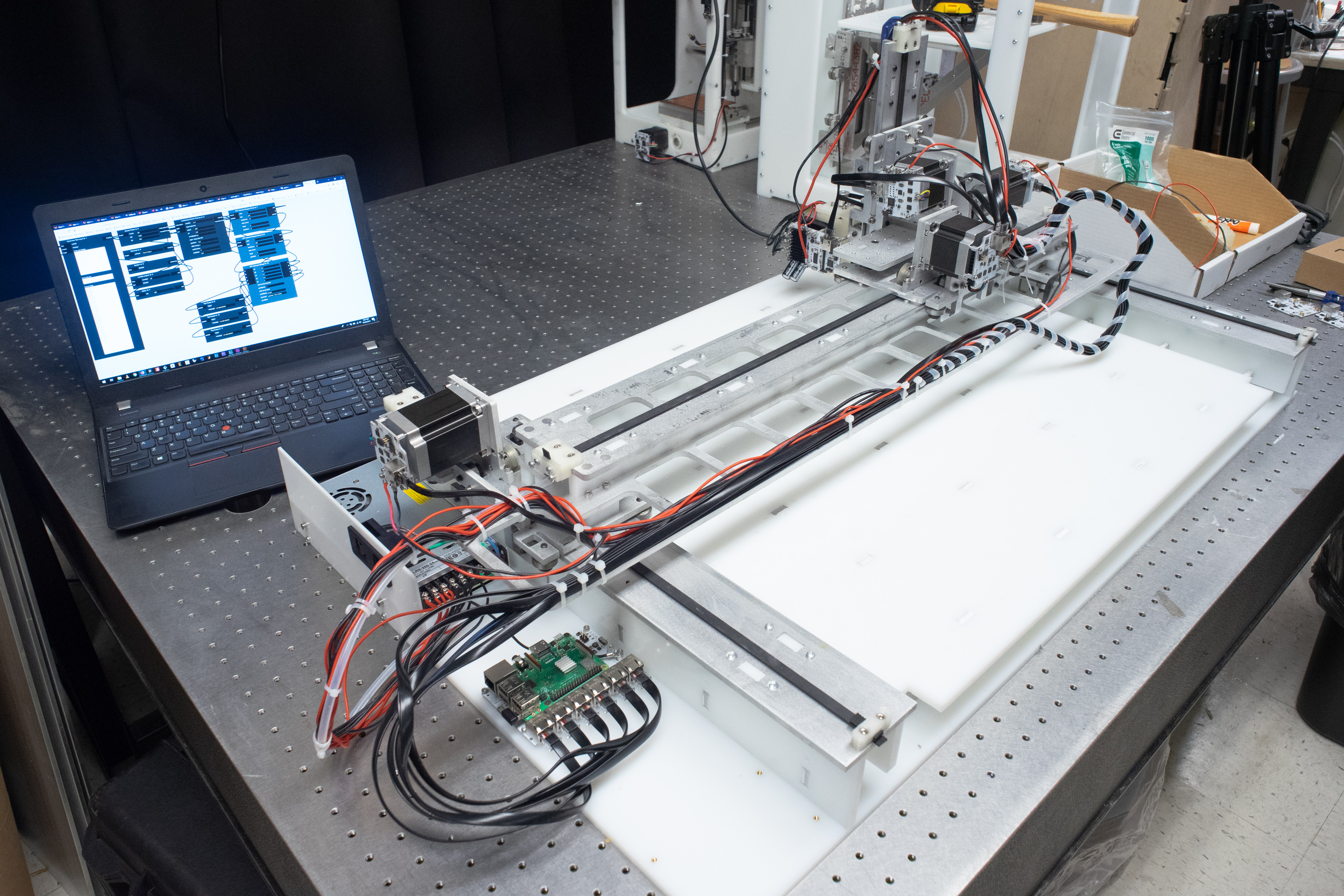RNDMC
Reconfigurable Numeric Dataflow Machine Controller
aka project 'consistent-sandbox'
This is a piece of software that is designed to help you assemble high level controllers from dataflow software elements. It serves a graphical programming interface, and is meant to live with dataflow hardware elements from this project 'automatakit'.
It's in the early stages, so bear with us. Everything is going to be great.
Usage
Installing Node.js, WebSocket and SerialPort
To Run DMC, you'll need to install node.js, and then the packages serialport and ws (websocket).
Install Node.js
Node.js is a runtime environment for javascript, so you can write and run js locally. Download and install it here.
To check that node is installed, you can use
node -v
In Windows check that in Environment Variables, System Variables, Path there is a path for C:\Users\yourusername\npm folder. If the folder does not exist, create it and set the path.
Install Serialport
Node comes with a package controller called 'npm' - node package manager. You can use this to install dependencies for node programs.
Serialport is a package for node that allows it to interact with a hardware serial port.
Navigate to the directory where you'll be running from (atkapi). Do
npm install serialport
Install WS (WebSocket)
WebSockets are very simple web connections. We use them to chat between the 'server' / heap (node) and the 'view' (your browser).
To install ws, do
npm install ws
Running DMC
To run the program, we launch the main.js file with node, from the command line. One of the things this does is run a tiny HTTP server that we can use to access the UI.
cd to the rndmc folder and run:
node main
It's handy to keep a terminal window open beside a browser when running the software - it's not perfect yet - I do this:
This way I can watch for errors, and restart it when it crashes. Hopefully not a lot of this will happen.


